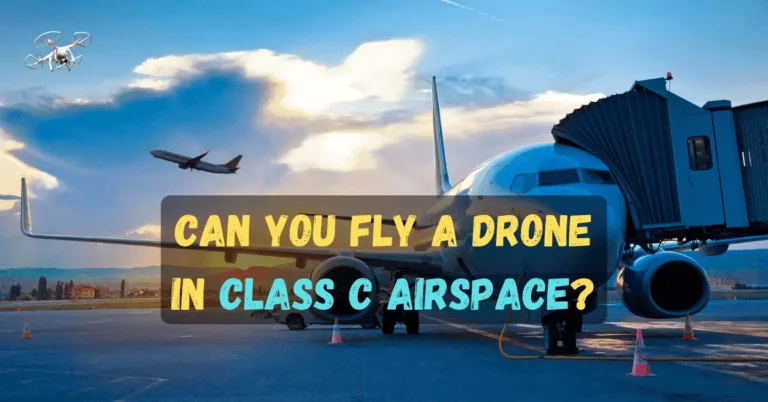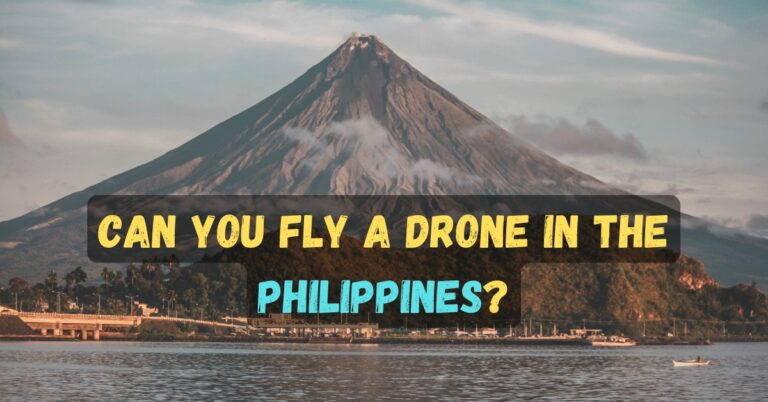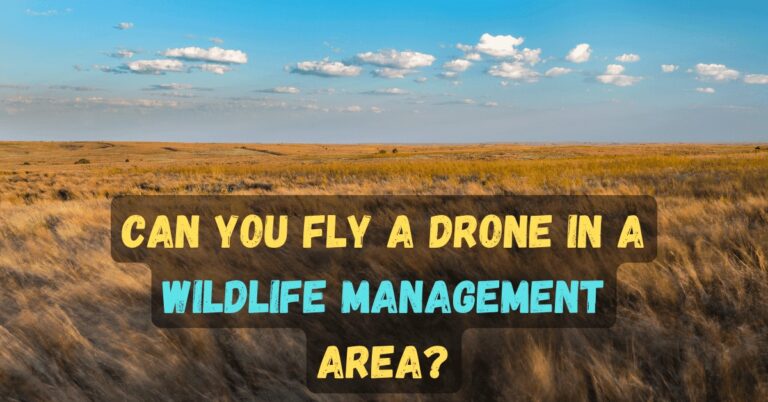How High Can You Fly a Drone Legally?

The increasing popularity of drones has necessitated the establishment of comprehensive regulations to ensure safety, privacy, and efficient airspace management.
Drones, once considered a novelty, have become essential tools in various fields including agriculture, photography, and logistics.
However, their proliferation has also introduced new challenges, prompting the need for standardized rules to mitigate risks associated with their operation.
Regulations surrounding drone usage are crucial for several reasons. Primarily, they aim to prevent accidents and collisions in an already congested airspace.
Pilots of manned aircraft, as well as civilian populations on the ground, rely on these regulations for their safety. Additionally, regulations help protect individual privacy by restricting drone flights over private properties without permission.
This is increasingly important as drones are often equipped with high-resolution cameras capable of capturing detailed images and videos.
Different regulatory bodies across the globe are responsible for overseeing drone operations within their respective jurisdictions. In the United States, the Federal Aviation Administration (FAA) plays a pivotal role in governing drone usage.
The FAA’s regulations cover various aspects such as maximum flight altitude, no-fly zones, and requirements for drone registration.
Similarly, in Europe, the European Union Aviation Safety Agency (EASA) sets forth rules that member states must adhere to, ensuring a harmonized approach to drone regulation.
Other countries have their own regulatory frameworks as well. For instance, Canada’s Transport Canada Civil Aviation (TCCA), Australia’s Civil Aviation Safety Authority (CASA), and India’s Directorate General of Civil Aviation (DGCA) all have specific guidelines tailored to their national contexts.
These bodies not only establish operational limits but also enforce penalties for non-compliance, ensuring that drone operators adhere to the stipulated regulations.
Understanding and complying with these regulations is essential for anyone looking to operate drones, whether for recreational or commercial purposes.
As drones continue to evolve and become more integrated into various sectors, the role of regulatory bodies will remain critical in fostering a safe and orderly airspace.
Curious about the materials used in the DJI Spark? Check out our guide on its build quality!
Understanding Maximum Altitude Limits
In the realm of drone operation, altitude limits are a crucial aspect governed by aviation authorities worldwide.
Each country has its own set of rules to ensure safety and prevent interference with manned aircraft. In the United States, the Federal Aviation Administration (FAA) mandates that drones must not exceed an altitude of 400 feet above ground level.
This regulation is designed to minimize the risk of collisions between drones and manned aircraft, which typically operate at higher altitudes.
Canada, similarly, enforces strict altitude limits for drone operations. Transport Canada stipulates that drones should not be flown higher than 400 feet above ground level.
This aligns closely with the FAA’s guidelines and serves the same purpose of maintaining a safe airspace for all types of aircraft.
The United Kingdom has comparable regulations under the Civil Aviation Authority (CAA). The CAA’s rules are slightly different, allowing drones to be flown up to 500 feet above ground level.
However, this is still within a range that ensures drones do not interfere with manned aviation activities. The CAA emphasizes the importance of drone pilots maintaining visual line-of-sight to further enhance safety.
In Australia, the Civil Aviation Safety Authority (CASA) imposes a maximum altitude limit of 400 feet for drones.
This regulation is part of a broader framework aimed at integrating drones safely into Australian airspace.
CASA’s rules are designed to prevent any potential conflicts with manned aircraft, particularly those operating near airports or in controlled airspace.
The rationale behind these altitude limits is universally centered on safety. By restricting drones to lower altitudes, regulatory bodies aim to create a buffer zone that protects both drone operators and manned aircraft pilots.
This separation reduces the likelihood of mid-air collisions, which could have catastrophic consequences.
Additionally, these regulations help to ensure that drones remain within a manageable range, making it easier for operators to maintain control and respond to any unforeseen circumstances.
Thinking of mounting a GoPro on your DJI Mavic Air? Check out the considerations before you fly!
Exceptions to Altitude Restrictions
While standard altitude restrictions for drone operations are typically set at 400 feet above ground level in many jurisdictions, there are notable exceptions where higher altitudes may be legally permissible.
These exceptions often apply to specialized scenarios, including commercial operations, research, and emergency services.
Each of these areas may require specific permissions or waivers from relevant regulatory bodies to ensure compliance and safety.
For commercial operations, businesses that utilize drones for tasks such as aerial photography, surveying, or delivery services may seek waivers to operate above the standard limits.
To obtain such a waiver, a detailed application must be submitted to the governing aviation authority, such as the Federal Aviation Administration (FAA) in the United States.
The application should include comprehensive information on the proposed operation, safety measures, and risk mitigation strategies.
The review process is rigorous, ensuring that the higher altitude operations do not pose a risk to manned aircraft or public safety.
Research institutions and universities often conduct experiments or gather data that require drones to fly at higher altitudes.
These entities can apply for special authorizations that grant temporary elevation permissions. The application process typically involves demonstrating the scientific merit of the research, adherence to safety protocols, and the potential benefits of the data collected.
Regulatory bodies assess these applications on a case-by-case basis, considering the potential impact on air traffic and public safety.
Emergency services, such as police, fire departments, and medical response teams, may also need to operate drones at higher altitudes during critical situations.
In these cases, waivers can be expedited to allow for immediate response. The process involves coordination with aviation authorities to ensure that the operations do not interfere with other emergency or routine air traffic.
These waivers are often granted with stringent conditions to ensure that the primary mission of safeguarding lives and property is achieved without compromising overall airspace safety.
In conclusion, while standard altitude restrictions are in place to ensure safe drone operations, exceptions are granted under specific circumstances.
The process for obtaining these special permissions is thorough and designed to balance operational needs with the overarching priority of maintaining airspace safety.
Intrigued about using DJI drones for agriculture? Check out our guide on Where Can I Buy a DJI Agricultural Drone?
Impact of Airspace Classes on Drone Altitude
When operating a drone, understanding the different airspace classes is crucial to ensure compliance with legal altitude restrictions.
The airspace is divided into several classes: Class A, B, C, D, E, and G, each with its own set of regulations that directly impact where and how high a drone can fly.
Class A airspace encompasses altitudes from 18,000 feet mean sea level (MSL) up to and including flight level 600.
This high-altitude airspace is primarily reserved for commercial air traffic, and drone operations in Class A are generally prohibited without special authorization.
Class B airspace surrounds major airports and extends from the surface up to 10,000 feet MSL. Due to the high volume of manned aircraft, drone pilots must obtain explicit permission from air traffic control (ATC) before operating within Class B airspace.
Similarly, Class C airspace, found around regional airports, extends from the surface to 4,000 feet above the airport elevation and also requires ATC approval for drone flights.
Class D airspace typically surrounds smaller airports from the surface to 2,500 feet above the airport elevation.
Drone operators must contact the ATC for permission to fly within Class D airspace, ensuring that their activities do not interfere with manned aircraft operations.
Class E airspace includes controlled airspace not classified as A, B, C, or D, starting at 700 or 1,200 feet above ground level (AGL) and extending up to 18,000 feet MSL.
While ATC authorization is not always required in Class E, it is essential to verify local regulations as they can vary.
Class G airspace, also known as uncontrolled airspace, extends from the surface up to either 700 or 1,200 feet AGL, depending on the region.
Drone pilots have greater freedom to operate in Class G airspace without ATC permission, but they must still adhere to the maximum altitude limit of 400 feet AGL set by the Federal Aviation Administration (FAA) for drone flights.
Understanding the distinctions between controlled and uncontrolled airspace is vital for drone operators. Controlled airspace (Classes A, B, C, D, and E) requires varying levels of coordination with ATC, ensuring the safety and efficiency of manned and unmanned aircraft.
Uncontrolled airspace (Class G) offers more flexibility but still demands adherence to established altitude limits.
By familiarizing themselves with these airspace classes and their associated restrictions, drone pilots can navigate the skies safely and legally.
Looking for [Affordable Drones with Cameras and 2kg Payload Capacity]? Check out our selection of high-quality drones perfect for aerial photography and videography.
Technological Limitations and Considerations
When exploring how high you can fly a drone, it’s essential to recognize the technological limitations that could impede its altitude, aside from legal restrictions.
One primary factor is battery life. Most consumer drones are equipped with lithium-polymer batteries, which provide a finite amount of power.
As a drone ascends to higher altitudes, it requires more energy to maintain stability and counteract wind resistance, thereby depleting the battery more rapidly.
This limitation can significantly shorten flight duration, making it impractical to reach or sustain high altitudes.
Signal strength is another crucial consideration. Drones rely on a strong and stable connection between the drone and the remote controller to function correctly.
As the drone ascends, the signal can weaken due to increased distance and potential obstructions like buildings or natural terrain.
A weak signal can result in delayed responses to control inputs or even complete loss of control, posing a risk to both the drone and surrounding areas.
GPS reliability also plays a pivotal role in high-altitude drone flight. GPS systems are essential for navigation and maintaining the drone’s position.
However, at higher altitudes, the GPS signal can become less reliable due to interference from atmospheric conditions or satellite geometry.
Reduced GPS accuracy can affect the drone’s ability to hover steadily or return to its launch point, complicating flight operations.
The physical design of the drone further impacts its performance at elevated heights. Drones are engineered with specific aerodynamic properties tailored for optimal performance within a certain altitude range.
As the drone climbs higher, the thinner air density can diminish its lift and stability, making it harder to control.
Additionally, temperature variations at higher altitudes can affect the drone’s electronic components, potentially leading to malfunctions.
In conclusion, while understanding how high you can legally fly a drone is important, acknowledging the technological limitations is equally crucial.
Battery life, signal strength, GPS reliability, and physical design are all factors that can constrain a drone’s altitude capabilities, ensuring safe and efficient operation.
Curious why your drone battery keeps conking out before your phone? Dive into our explainer to find out: Why Drone Batteries Can’t Last as Long as Mobile Phone Batteries?
Consequences of Violating Altitude Regulations
Operating a drone offers unparalleled perspectives and opportunities, but it also comes with a set of legal responsibilities, particularly regarding altitude limits.
Exceeding these limits can result in significant legal and financial repercussions. Fines for violating altitude regulations can be substantial, often starting in the hundreds of dollars and escalating based on the severity of the infraction.
For instance, in the United States, the Federal Aviation Administration (FAA) imposes fines that can reach up to $27,500 for civil penalties, while criminal penalties can include fines of up to $250,000 and up to three years in prison.
Confiscation of equipment is another potential consequence. Authorities have the right to seize drones that are operated illegally.
This not only results in the loss of expensive equipment but also the associated data, which can be critical for professional drone operators.
The impact of such confiscation extends beyond the immediate financial loss, affecting future operations and potentially damaging a business’s reputation.
In severe cases, criminal charges can be brought against operators who flagrantly violate altitude restrictions, especially if their actions endanger public safety.
For example, an incident in 2017 saw a drone operator in California facing criminal charges after flying a drone above the legal altitude limit, resulting in interference with firefighting efforts. Such cases highlight the serious nature of these regulations and the importance of compliance.
Real-world examples underscore the importance of adhering to legal altitude limits. In 2019, a UK-based drone operator was fined £2,000 for flying a drone above 400 feet near a busy airport, thereby endangering aircraft.
This case illustrates the potentially severe consequences of ignoring altitude regulations, including hefty fines and legal action.
Ultimately, understanding and respecting drone altitude regulations is crucial for all operators. Awareness of the legal and financial repercussions, along with real-world examples, emphasizes the importance of compliance to avoid the significant consequences that can arise from violations.
Curious about the distinction between drones and robots? Dive deeper into What is the Difference Between a Drone and a Robot? Is It Just the Programming?
Tips for Staying Within Legal Altitude Limits
Operating a drone within legal altitude limits is crucial for ensuring safety and compliance with regulations. Here are some practical tips to help drone operators stay within these bounds.
Firstly, always begin with a comprehensive pre-flight checklist. This checklist should include verifying that your drone is in good condition, confirming your flight plan, and ensuring you are aware of the altitude limits in your area.
A well-prepared pre-flight checklist can prevent many common issues and ensure a smooth and legal flight.
Utilizing apps and tools that provide real-time airspace information is another essential practice. Several applications are available that offer up-to-date details on no-fly zones, temporary flight restrictions, and other critical airspace data.
These tools often feature altitude limit alerts, helping you avoid inadvertently breaching legal limits. Familiarize yourself with these apps and make them a part of your standard operating procedure.
Participating in training programs can significantly enhance your understanding of drone regulations and safe flying practices.
Many organizations offer courses tailored to drone operators that cover legal altitude limits, airspace classifications, and other regulatory aspects.
Completing these programs can not only make you a more knowledgeable pilot but also reduce the risk of accidental violations.
Staying informed about local regulations is paramount. Drone laws can vary significantly between regions, and what is permissible in one area may not be allowed in another.
Regularly check for updates on local drone regulations from official sources. Joining local drone clubs or online communities can also be beneficial, as members often share valuable insights and updates on regulatory changes.
By incorporating these tips into your drone operations, you can ensure that you stay within legal altitude limits, contributing to safer skies and a more enjoyable flying experience.
Curious about how drones fly? Wondering if one propeller is enough? Check out our info on Can a Drone Fly with One Propeller?
Future Trends in Drone Altitude Regulations
As drone technology continues to evolve, the regulatory landscape governing their altitude operations is also expected to undergo significant changes.
One of the most anticipated advancements is the potential for higher altitude operations, enabled by improvements in drone battery life, propulsion systems, and navigation technologies.
These enhancements could allow drones to safely operate at greater heights, thereby expanding their utility in various sectors such as agriculture, logistics, and emergency response.
Another important trend is the development of sophisticated drone traffic management systems (UTM).
These systems aim to integrate drones into the national airspace by providing real-time monitoring and coordination, ensuring safe and efficient operations even at higher altitudes.
UTM systems could facilitate more flexible altitude regulations, offering designated air corridors for different types of drone operations.
This would not only optimize airspace usage but also minimize the risk of collisions and other operational hazards.
Regulatory bodies are also considering more dynamic approaches to drone altitude regulations. Instead of rigid altitude limits, future policies might adopt a more flexible framework based on the specific risk profile of each operation.
Factors such as the type of drone, its operational environment, and the operator’s level of training and certification could influence permissible altitude limits.
This adaptive regulatory approach could better accommodate the diverse applications of drones, from recreational use to complex commercial missions.
The impact of these trends on hobbyist and commercial drone operators could be profound. Hobbyists might enjoy greater freedom and flexibility, provided they adhere to safety guidelines and participate in UTM systems.
Commercial operators, on the other hand, could benefit from expanded operational capabilities and improved efficiency in their service delivery.
However, these potential advantages must be balanced against the need for stringent safety and privacy measures.
As regulations evolve, it will be crucial for all drone users to stay informed and compliant with the latest rules to fully leverage the benefits of higher altitude operations.
Wondering if ND filters are right for your drone footage? Check out our guide on Should I Use ND Lens Filters When Shooting Drone Video? for the inside scoop!


![Drone Laws in Cuba [Can You Fly a Drone in Cuba in 2024?]](https://skbestgadgets.com/wp-content/uploads/2023/04/Drone-Laws-in-Cuba-768x402.jpg)




